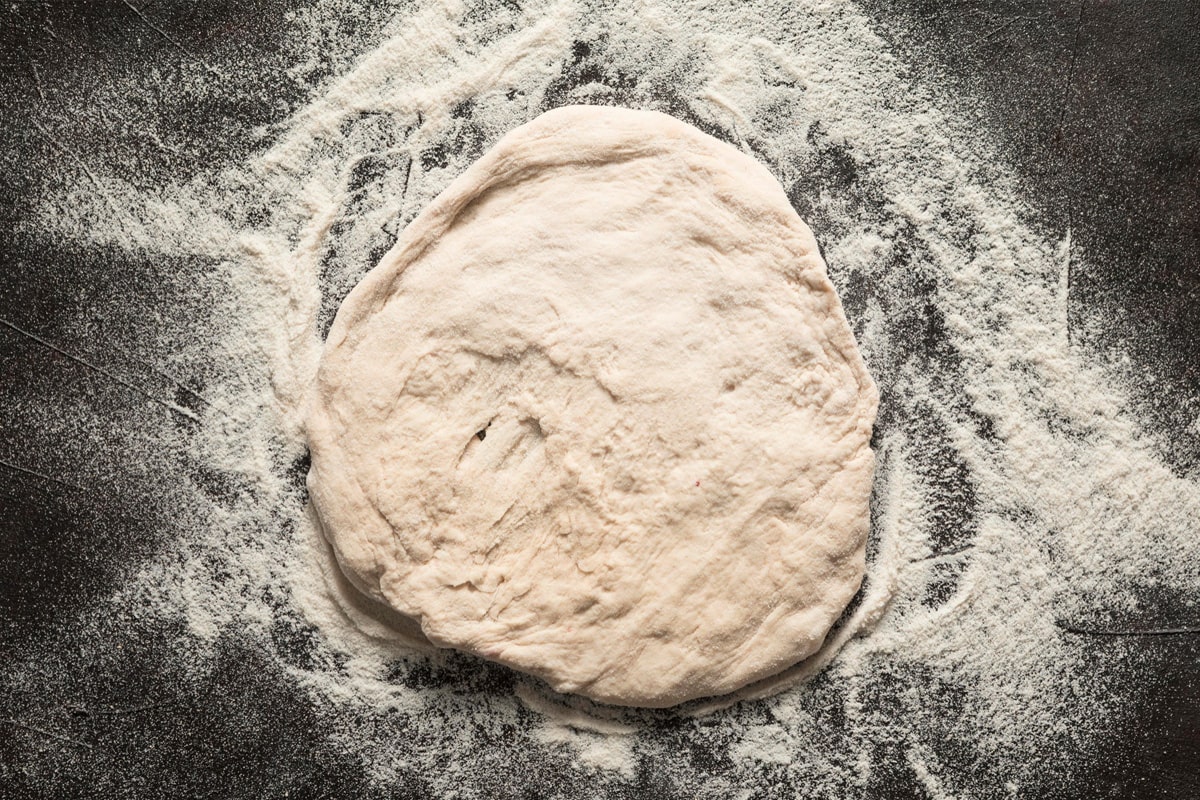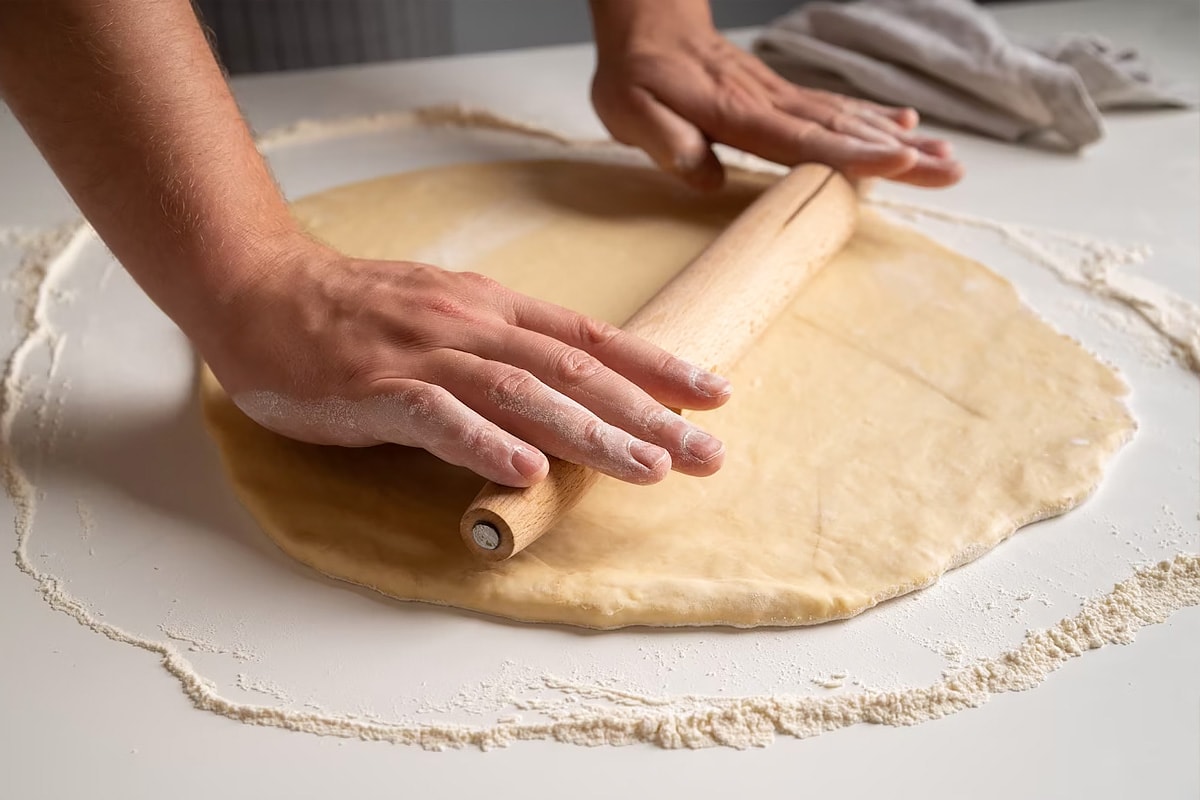Ah, pizza – the heavenly delight that brings joy to our hearts and stomachs. But what happens when you’re all set to craft that perfect homemade pizza, only to realize you’ve neglected the all-important dough rise? We’ve all been there, and the disappointment is palpable, like a deflated balloon.

As a passionate home cook and pizza lover, I’ve experimented with different pizza dough recipes and techniques over the years. And let me tell you, the answer isn’t as simple as a yes or no. It depends on the type of pizza you want to make, the texture you’re aiming for, and the time you have available.
So, join me as we embark on a saucy, cheesy journey into the realm of pizza dough. We’ll uncover whether it truly needs that rise, or if there are clever hacks and shortcuts to satisfy your homemade pizza cravings.
Let’s toss aside our preconceptions and get ready to explore the doughy depths of pizza perfection!
Why Does Pizza Dough Need to Rise?
Ah, pizza connoisseurs, gather ’round and let me regale you with the tale of the dough that must rise! It’s not merely some culinary theatrics employed by pizzaiolos to impress us; no, it’s the very heart and soul of pizza perfection.
You see, that doughy transformation from a clay-like lump to a fluffy, cloud-like wonder is nothing short of magical.
The rising process is what makes pizza dough soft, fluffy, and oh so delicious. Let me explain.

When flour, water, yeast, and salt mingle, they create a dough that, when left to rise, undergoes a miraculous metamorphosis. The yeast feasts upon the sugar in the flour, producing carbon dioxide gas which, in turn, causes the dough to expand and ascend. This rising time is crucial, as it determines the airiness and crispiness of your pizza crust. Without it, your pizza would be a sad, dense, and chewy disappointment.
The longer you let it rise, the more gas it produces, and the fluffier your dough becomes. But why is this important for pizza?
Well, when you put your pizza in the oven, the heat causes the gas to expand even more, creating those beautiful air pockets and a light, crispy crust. If you don’t let your dough rise, your pizza will be dense, tough, and not very enjoyable to eat.
Now, I know what you’re thinking. “Can’t I just use store-bought pizza dough? It’s already risen, right?” Well, my friend, you could, but you’ll be missing out on the fun of making your own dough and the satisfaction of knowing you did it yourself.
Plus, there’s nothing quite like the satisfaction of knowing you’ve brought your pizza to life from scratch and the homemade dough always tastes better.
How Long Should Pizza Dough Rise?
Is there a right answer, or is it all a matter of personal preference? Well, I’m here to tell you that there are a few factors to consider when it comes to pizza dough rising.
Generally, pizza dough needs to rise for at least an hour to two hours at room temperature.
However, the amount of time you should let your pizza dough rise depends on a few factors, such as the type of yeast you’re using, the temperature of your kitchen, and the desired texture of your pizza crust.
If you’re using active dry yeast, you’ll need to activate it first by adding it to warm water and sugar before mixing it into the dough. This can take up to 10 minutes. Once the yeast is activated, you can mix it with the flour, salt, and other ingredients, and let the dough rise for 1-2 hours.
Alternatively, you can use instant yeast, which doesn’t need to be activated and can be mixed directly into the dough. This can reduce the rising time to as little as 30 minutes, depending on the dough’s temperature.
The temperature of your kitchen can also affect the rising time of your pizza dough. If your kitchen is warm, your dough will rise faster.
If your kitchen is cool, your dough will rise slower.
If you want a thicker, more flavorful crust, you can let the dough rise for up to 24 hours in the refrigerator. This slow rise allows the dough to develop more complex flavors and a chewier texture.
How to Tell When Dough is Ready

So, how do you know when your pizza dough is ready to use? The best way to tell is by using the finger test. Gently press your finger into the dough. If the dough springs back quickly, it needs more time to rise. If the dough springs back slowly, it is ready to use.
Another way to tell if your dough is ready is by checking the size. Your dough should have doubled in size after the rising time. If it has not, it needs more time to rise.
What Happens if You Don’t Let Pizza Dough Rise?
As a pizza lover, I know that the dough is the foundation of a great pizza. But what happens if you don’t let your pizza dough rise properly? Let’s find out.
Effects on Texture and Flavor
If you don’t let your pizza dough rise, you’ll end up with a dense and chewy crust. The yeast in the dough needs time to ferment and release carbon dioxide, which creates air pockets in the dough. These air pockets are what give pizza crust its light and airy texture.
Not only will your crust be dense, but it will also lack flavor. The longer the dough ferments, the more complex the flavor becomes. Without proper fermentation, your crust will taste bland and uninspired.
How to Salvage Under-Risen Dough
If you’ve already made the mistake of not letting your pizza dough rise, don’t worry. There are still ways to salvage it. One option is to roll the dough out as thin as possible and bake it like a cracker. This will give you a crispy crust that’s perfect for dipping in sauces.
Another option is to add baking powder to the dough to create a chemical leavening reaction. This will help the dough rise during baking, but it won’t have the same flavor as properly fermented dough.
In the end, it’s always best to let your pizza dough rise properly. It may take a little extra time, but the end result will be worth it. Trust me, as a pizza lover, I know what I’m talking about.
🤔 Answering Your Questions:
Can you let pizza dough rise too long?
Yes, letting pizza dough rise for too long can cause it to become over-fermented and result in a sour, unpleasant flavor. Additionally, the dough may become too elastic and difficult to work with.
Can you speed up the rising process?
Yes, you can speed up the rising process by using warm water to activate the yeast and placing the dough in a warm spot, like an oven with the light on or near a warm stove. However, be careful not to let the dough rise too quickly, as it can lead to over-fermentation.
Can you freeze pizza dough after it has risen?
Yes, you can freeze pizza dough after it has risen. Simply punch it down, shape it into a ball, and wrap it tightly in plastic wrap before placing it in the freezer. To use it, thaw it in the fridge overnight and let it come to room temperature before rolling it out.
Can you add toppings to the pizza before letting the dough rise?
No, it’s best to add toppings to the pizza after the dough has risen and been shaped. Adding toppings before the dough has risen can weigh it down and prevent it from rising properly.
How long should you knead pizza dough?
Pizza dough should be kneaded for at least 10 minutes by hand, or 5 minutes using a stand mixer with a dough hook attachment. This helps to develop the gluten in the dough, which gives it structure and texture.

Leave a Reply